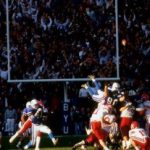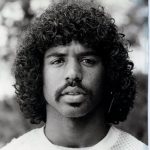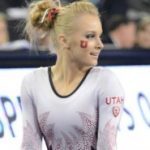Utah WRs – system vs talent
Welcome to Ute Hub › Forums › Utah Utes Sports › Football › Utah WRs – system vs talent
- This topic has 17 replies, 8 voices, and was last updated 3 years, 3 months ago by
 DrJazzy.
DrJazzy.
-
AuthorPosts
-
-
 DrJazzyParticipant
DrJazzyParticipantDuring a quick lunch break from work duties, caught Covey’s interview on the 700.
Covey: ‘Utah’s system isn’t good for showcasing WRs’ (paraphrasing).
That’s not good for selling recruits – but I do wonder is it really the system? Sure Utah will always be run first…but I do think talent comes into play more, and maybe it is a self-fufilling prophecy at this point.
When we had a great QB – Huntley, our WRs (minus Covey) didn’t match with Huntley’s talent. They had a tough time getting open/separation (although Huntley def missed a few deep balls). Solomon Enis, love the kid, and he is an elite blocker at the WR position and plays hard despite his frustrations with Utah and the system, isn’t great at getting separation. And he was a 4* recruit. B Thompson, another 4* recruit, could get open, but unfortunately was always injured and when he wasn’t, he had Brentley as his QB with too many missed throws.
Basically, will be interesting how the next couple years play out as we now have a QB that can hit pn medium/deep balls and is accurate enough to match with WR talent. I am hanging onto hope that it is more of a talent issue rather than a system issue.
goooooo Utes!!!!!
-
ayoriver
ParticipantI would agree with that sentiment, historically, save for a few near 900+ yard receiving seasons here and there. I think the Bumphis hire was made with the intention to change that specifically, so I’m very intrigued to see what this new WR group does. Along with Rising and future QBs like Nate Johnson, I think they begin to shift that narrative pretty dramatically.
-
 YergensenParticipant
YergensenParticipantCovey would know. I think it’s the scheme. Run first, heavy TE sets. Large rotation of WR, high rotation frequency. All of this equals low WR targets and production. We’ve had some talented playmakers recently (Covey, BT, JD), so I don’t think it’s a talent issue.
-
 DrJazzyParticipant
DrJazzyParticipantI watch the WR’s pretty closely, they have a hard time separating (most times). Especially against teams with athletic/talented secondaries like OR.
We also don’t have the most precise route runners.
One thing that may more closely argue scheme – we could call more quick plays to the edges…curls/slants/comebacks. Just not sure if we don’t because of gameplan or because we can’t win those matchups.
Watch the WRs (outside) against Ohio State…see how many times they really are ‘open’.
-
 YergensenParticipant
YergensenParticipantI think if we go back and watch Covey, BT and JD we would see them getting separation. JD was open virtually every route he ran this year, which amounted to 1 route/play per game. Why didn’t he play more?
-
 DrJazzyParticipant
DrJazzyParticipantThey are really not open – or at least open in football time (by the time they get free the QB is under duress and has minimal chance at a throwing window).
JD has speed – but that’s it. He is a poor route runner and he is poor at tracking deep balls.
Vele does a better job of getting open – and sometimes Rising does miss on the delivery.
For WR’s, route running and quickness is more important. Keenan Allen does not have great speed – but he has elite route running. Watch the games more closely…when Rising does have a window it is rare that outside WR’s have great separation.
Last yr was different – BT was frequently open…but Brantley could not locate/deliver.
-
 DallasParticipant
DallasParticipantBecause Dixon couldn’t catch a deep ball even when it bounces off his chest.
-
 YergensenParticipant
YergensenParticipantWrong answer
-
-
-
-
-
chinngiskhaan
ParticipantI’m perfectly happy running 3 TE sets with one WR in the Covey mold if that is what our personnel strengths are, and it seems to be much easier for us to recruit TEs than top level outside WR types. I knew going into the season that a combination of Covey and Kuithe would be almost impossible to stop, and that proved correct. Kuithe types are a matchup problem (too big for a DB to cover, too fast for most LBs), as are Covey types (too fast for just about anyone to react quickly enough to prevent a completion and YAC).
As long as one of our TE types is able to stretch the field like Kincaid did this year, I think TEs fit our system far more than WRs. What we do on offense is completely unique, and it is essentially the opposite of what everyone else is doing, so defenses are not built to handle it. Most teams these days, Utah included, run a 5 DB defense. 5 defensive back defenses are going to have a helluva time stopping an attack that includes a bruising RB, 3 stud TEs, and a lightning quick WR. You’ve essentially got a LB for the RB, a LB for one of the TEs, and that leaves the other two TEs and the slot guy to be covered by DBs. If they switch out a DB for an extra linebacker you pretty much have a guaranteed completion if you can pass block long enough. If they don’t switch out then you either have a huge mismatch in the passing game, or you run the ball down their throats and there isn’t a damned thing they can do about it… Don’t forget that they need someone to keep an eye on the QB, who is a threat to break off a 20 yard run if he isn’t kept under wraps.
Now… Imagine this offense being run by a kid who ran a sub 10.50 100m sprint in high school. You have to assign someone quick enough to account for that home run threat without putting your pass defense at a major disadvantage.
Now… Imagine a guy like Tavion works on his receiving out of the backfield, can you imagine what he’d do to a DB if he had a full head of steam on a pass out to the flat with two tight ends in front of him blocking?
As long as our athletes on offense are equal to their athletes on defense we will have a huge advantage schematically. It’ll be interesting to see how the scheme works against a team with elite level athletes all over their defense.
Personally, I love this scheme, and I think we should 100% go all in on it. Obviously, if that Covey type athlete were also above 6 feet tall, and an elite level WR prospect that would be awesome, but this works just fine.
-
 DrJazzyParticipant
DrJazzyParticipantGood points – I like the point about swerving from the crowd and the advantages it offers.
I just think we gotta be due for another Tim Patrick…and I think next yr will be really telling. Money Parks ran a great route for that TD against USC…we’ll see who steps up this yr. I would hate for it to be a systems thing – because that would limit our recruits and limit our potential. We can def succeed running a 3 TE offense because we have – but if we were more dynamic (multiple looks), we could reach even higher ceilings I think.
-
 CharlieParticipant
CharlieParticipantI think the 3 TE sets helped us more than many people realize. It reminded me of Air Force in a way because it was unusual and hard to replicate with a scout team to prepare. Air Force runs the option all the time while others prepare for it in a few days. Utah enjoyed the same with the 3 TE package. Most defensive guys say a TE that blocks very well and can catch is an awful problem. Three doing both gets much worse. How it impacts the strong side is one thing, then motion can flop the strong side in unusual ways. Strong safeties and OLBers have their heads on a swivel to track late releases. It makes it hard to rush more than the front four. But, I have no idea why in the world we did not have it working in September.
-
-
 AlohaUteParticipant
AlohaUteParticipantAll season I thought about it being kind of equal between the system and receivers. I noticed that for the most part the receivers didn’t get great separation, but at the same time, Vele seemed to show that if you could get open you’d get balls thrown your way. He seemed to be the guy that could get separation.
But there is definitely something to the system we play as well. It’s run focused. That said, I think the coaches have shown that they will adapt the offense to where the strengths are (as we saw with TE’s this season). If the receivers are able to get open and catch the ball, I suspect there will be more use of them.
-
 2008 National ChampParticipant
2008 National ChampParticipant50% system, 35% QB, 15% receivers. It would be easier to show with all 22 tape but Ludwig’s scheme, by design, brings as many defenders into the box as possible while mainly utilizing single receiver routes or quick concepts on early downs. Then on 3rd and long, the design depends on keeping the QB clean so that he can throw into the teeth of 6 and 7 man coverages.
Huntley in 2019 thrived on 3rd down when he could make the first defender miss and was willing to take shots downfield, even when the receiver was covered. Brewer didn’t have the same escapability, didn’t seem willing to take the shots unless the receiver was already open, and certainly didn’t get much help from the O Line. The system hadn’t changed, the execution had. But if we are all being honest, Huntley leading the country in 3rd and Long situations made the scheme look much better than it probably deserved while conversely Brewer highlighted many of the weaknesses.
Rising was able to provide the ability / willingness to make defenders miss again and was able to convert with his feet which loosened things up for the receivers. He was also able to throw accurately for the first few games (with the exception of WSU). The last few weeks, Rising wasn’t as accurate but by then, the rest of the team was now operating at a high efficiency so those weren’t back breakers. So in effect, the quality Rising was providing was what allowed Ludwig to break his own tendencies, especially in the first Oregon game where he felt comfortable calling runs on 3rd and long which the team was able to execute at a high level.
The receivers get the least credit in my mind. They can only run the routes assigned and they certainly can’t throw themselves the ball. And what we may decide is a sloppy route can just as easily be an attempt to disguise. What is frustrating when we watch is that the other team seems to throw to open receivers while Utah only seems to throw into tight coverage. But I would still rank it as 1) fan perception, 2) play design, 3) the ability of the QB to identify the best option and 4) the receiver.
-
 DrJazzyParticipant
DrJazzyParticipantNice points.
I have made a concerted effort to pay more attention to the WR’s, how quickly they can get off the line, when are they open, etc. They really aren’t open often – I don’t think you can blame this on their route. If what you say is true, then there is little difference between a mediocre WR and a good WR. Watching good WR’s – they are much better at getting open. The difference bt good and elite is the ability to win one on one matchups for the ball.
When Utah’s WR’s get clearly wide open, and Cam sees them, he generally gets them the ball well (short throws). He misses some medium and long throws (more misses on long throws).
We are clearly going for more speed at WR. We’ll see if this will open the field more. I don’t think we have a clear answer to my question above yet.
-
 2008 National ChampParticipant
2008 National ChampParticipantUltimately it comes down to whether or not you believe that the Utah coaches are completely incapable of identifying and developing talent at the WR position. I don’t believe this is true. So if we agree that there are capable receivers on the roster every year, why do they consistently underperform?
The only thing Siaosi (sic?) Mariner was good at while on the hill was drawing PI penalties on his one or two deep routes per game. Then he went to Utah State and damn near put up a 1000 yd (63 catches, 987 yards, 10 td’s) season. Unless you are going show me that he somehow developed a skill between the 2018 pick 6 and the 2019 season, I’m going to default to scheme over talent.
-
 DrJazzyParticipant
DrJazzyParticipantNot really the best example to prove your point as you are comparing MWC CB’s and talent to Pac12 talent. Not saying Pac12 is that much superior – but Wash and OR sent multiple DB’s and safeties to the NFL (early round picks on top) during the yr we had Sione.
I am not saying it is purely talent – I did outline some scheme issues above (lack of quick hitters like slants, curls, etc)…but you are basically telling me WR’s are open all over the field and our scheme is preventing them from getting the ball – that feels silly and is not what I see on the screen.
It isn’t like Sione is playing in the NFL right now – he lacks speed/quickness to get separation against elite athletes…he is damn good at fighting for 50:50 balls though.
Last Utah WR to make the league was Tim Patrick – he wasn’t drafted and clearly improved his route running once he hit the league…but he actually had decent stats at Utah and was a good deep play threat during our time here. Yes, different OC so you can argue different scheme.
For a position like WR, you win with NFL level talent. Our WR’s just aren’t getting great separation.
-
 2008 National ChampParticipant
2008 National ChampParticipantNo, I’m not telling you that WR’s are open all over the field at all times. I just pointed out that Utah had a receiver on their roster who had 15 catches in 2016, 20 in 2017 and 17 in 2018. In 2019 at Utah State the same receiver had 63 catches. You are free to interpret that in any way you like. In my opinion, it is an example that the receivers on the Utah roster may be able to produce at a higher rate if given more opportunities. Is it definitive proof? Not by a long shot. But it does at least point to scheme.
Another way to look at it is, why does WSU always seem to have 3 or 4 receivers no one has ever heard of that produce at high levels? Could it be the same reason Utah is the envy of the conference for their ability to always have a highly effective feature back? This also points to scheme.
And then there is also the misconception that a receiver needs to be “wide open” before the QB decides to throw them the ball. On short routes like slants or outs, mesh concepts, or screens, the QB makes a decision pre- and post-snap on which receiver will have the best leverage and throws the ball. Without an obvious defensive breakdown, none of those routes should be “wide open” when the ball is thrown, no matter what the talking heads try to tell you. So I take the undefinable “ability to create separation” with a grain of salt.
For a current example, let’s look at Covey. 3 OC’s, 3 main QB’s (I’m not including 2019/2020 since they were short seasons). But if I was to give my impression, it would be that he was less “open” and his “ability to create separation” was the lowest in 2021. Under Roderick, Covey seemed to have an innate ability to get himself open. Taylor used him more on screens, slants and mesh so he was having to make a lot more contested catches. And 2021 Covey seemed to make every catch with a defender draped on him. Did Covey lose an ability or did the design of the offense and the play calling not emphasize his strengths? Obviously I believe it is more on system, but based on the limited information I have to assess, I’m not going to hold it against someone if they feel Covey just “lost a step” or the defenses were designed to stop him.
I’m also going to remember DeVonta Smith in 2020 and Drake London in 2021. Extreme examples sure but evidence that if an OC wants to get the ball to certain player(s), he can call plays to do so and the defense can’t stop it. And I don’t feel that Utah’s system is designed to showcase standout receivers. Instead, it treats them as a last resort.
-
 DrJazzyParticipant
DrJazzyParticipantI am not disputing there are scheme/system issues with Utah – I do agree with some of your points.
Don’t think using Leach’s system with WSU is a good example – because with Leach for sure it is a system. But their RB handoff equivalent is a swing pass/quick screen, so yes the counting numbers (catches, YAC, rec yards) will always look better at the expense of run yards.
Utah schemes similarly to get Covey the ball – our best WR, but he plays more that slot role. My point was always about the outside WR’s. Like I said – during the Ludwig era we really only had BT as a WR that could get solid separation.
Agree with your point that you don’t have to be ‘wide open’. But a successful slant demands that you can at least win a one-one matchup and beat a CB to a spot – and even then if the def is scheming for it or are in zone there might be someone near that space that prevents the throw. My point is – aside from Covey, Utah’s other WR’s aren’t winning that matchup during Ludwig era aside from the players I mentioned. We’ll see how this next batch of WR recruits do.
Leach’s recent WSU teams have sent players to the NFL at WR – they may not have been drafted or sustained past the practice squad…but they at least made it in that sense. Similar to BYU’s Dax Milne. That tells me those players are a step up talent wise from our players. I have no doubt Covey can at least land a FA/training camp contract. But, once again, I agree he had the talent – hence why Utah schemes for him to get the ball. As an aside – it is clear he was way more explosive as a Ft before his slew of injuries.
-
-
-
-
-
-
-
AuthorPosts
- You must be logged in to reply to this topic.
